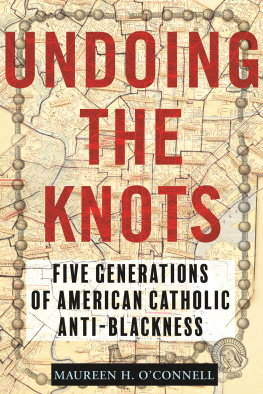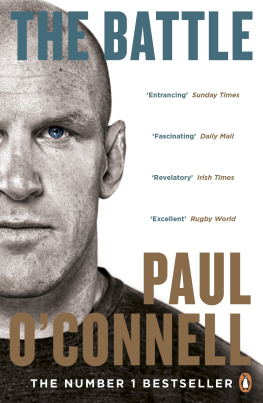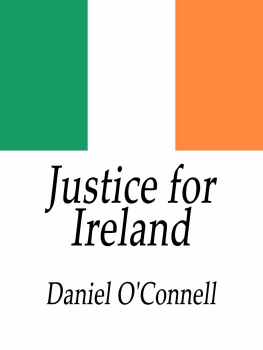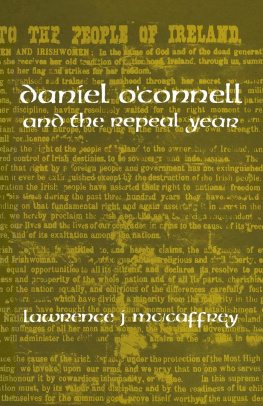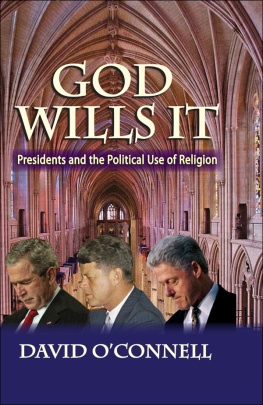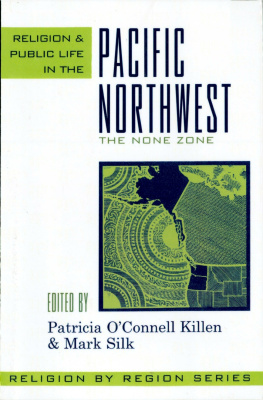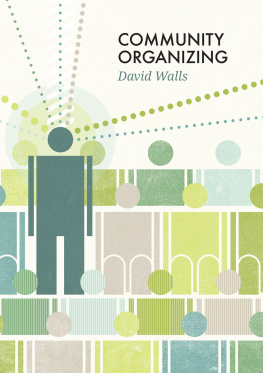An absolutely stunning story, and a stunningly beautiful one, beautifully told by a terrific writer, gifted thinker, and accomplished theologian. Maureen OConnells new book tells the tale of how Philadelphias Mural Arts Program successfully brought together artists, community activists, inner-city neighborhood residents, churchgoers, scholars, pastors, and simple lovers of art to spread a message of social justice, tolerance, and, in the end, love. Far beyond a simple neighborhood beautification program, OConnell shows how art advanced an idea of justice and peace, deepened a peoples appreciation for their own dignity, and invited outsiders into the vibrant life of the inner city. How can art transform a culture? How can a mural help someone understand God? How can paint lead to fellowship? Read this superb book and discover how.
James Martin, SJ
Author of The Jesuit Guide to (Almost) Everything
A beautiful and brilliant book about the ways that art making can build and sustain communities while promoting justice and restoring pride. OConnell vividly delineates the intersections of truth-telling and trust-building in the process of making and viewing public artworks.
Robin Jensen
Luce Chancellors Professor of the History of Christian Art and Worship, Vanderbilt University
This is a deeply moving and thought-provoking exploration of the transformative role of art in public life. It is also a plea to take the aesthetic seriously in the search for justice. OConnell shows that theological and ethical reflection takes place not just in books and classrooms but also on the walls and streets of our cities, revealing how beauty and justice are living realities. What an eye-opening work from this gifted scholar!
Susan A. Ross, Ph.D.
Professor of Theology and Faculty Scholar Chair, Department of Theology, Loyola University Chicago
This book is a celebration of the power of murals and the passion of those who create them. It is a carefully researched look at the Philadelphia murals seen through a theological lens. The author brings an enthusiasm and knowledge to her unique perspective that invites readers and viewers to see and understand these collaborative, community-centered murals as models for an art that has the potential to create social transformation.
Janet Braun-Reinitz
Co-author of On The Wall: Four Decades of Community Murals in New York City
If These Walls
Could Talk
Community Muralism
and the Beauty of Justice
Maureen H. OConnell
Foreword by Jane Golden,
Executive Director, Mural Arts Program

LITURGICAL PRESS
Collegeville, Minnesota
www.litpress.org
Cover design by Ann Blattner.
Photo of Jane Golden courtesy of YGS Group. All rights reserved. Used by permission. All other photos were taken by the author.
Persons named in this work were interviewed with the oral agreement that their comments would be used for publication. At the time of publication, written releases from two or three sources are pending.
2012 by Order of Saint Benedict, Collegeville, Minnesota. All rights reserved.
No part of this book may be reproduced in any form, by print, microfilm, microfiche, mechanical recording, photocopying, translation, or by any other means, known or yet unknown, for any purpose except brief quotations in reviews, without the previous written permission of Liturgical Press, Saint Johns Abbey, PO Box 7500, Collegeville, Minnesota 56321-7500. Printed in the United States of America.

Library of Congress Cataloging-in-Publication Data
OConnell, Maureen H.
If these walls could talk: community muralism and the beauty of justice / Maureen H. OConnell; foreword by Jane Golden.
pages cm
Includes bibliographical references.
ISBN 978-0-8146-3340-3 ISBN 978-0-8146-3404-2 (e-book)
1. Street artPennsylvaniaPhiladelphia. 2. Mural Arts Program (Philadelphia, Pa.) 3. Community arts projectsPennsylvaniaPhiladelphia. 4. Art and societyPennsylvaniaPhiladelphia. 5. Religion and social problemsPennsylvaniaPhiladelphia. I. Title.
ND2638.P48O28 2012
751.730974811dc23
2012007806
For Corinne and Thomas,
in thanks for their unfailing sisterly and brotherly love
and for Philadelphians who dare to believe
that beauty will save the world
Acknowledgments
Community muralists will tell you that any project worth its salt is really about the process behind the paint and not the final product on the wall. I have found the same to be true of this book about community muralism. These pages are the end product of a multiyear process of personal discovery, both in a city and a religious tradition with which I thought I was pretty familiar. Since my guides were community members and their visions, my epiphanies have been tremendous. Ive tried to capture them, albeit with words, in these pages.
I am grateful to the Society for the Arts in Religious and Theological Studies for an initial seed grant through their Luce Faculty Fellowship program in 20067, with special thanks to Kimberly Vrudny for encouraging me to apply. A Christian Faith and Life Grant through the Louisville Institute as well as a Faculty Fellowship from Fordham University funded an important year of research in 2008-9. The Wabash Center for Teaching and Learning in Theology and Religious Studies provided crucial funding for summer writing in 2010. My department chair, Terry Tilley, proved to be a tireless champion of my work here and helped me secure subventions from various sources at Fordham to cover the costs of incorporating so many images into the final product, as did a generous gift from Mr. and Mrs. Stephen E. Bepler.
Amy Johnston, information and special events specialist with Philadelphias Mural Arts Program, was absolutely invaluable to me when it came to getting in touch with muralists and community members, most notably Jane Golden, and in handling various details in the final stages of production. Among the artists I have been fortunate to come to know through this process, Eric Okdeh, Shira Walinsky, and Joe Brenman stand out as three remarkable individuals who warmly welcomed me into the communities with which they worked and helped me ground my own creative project in the stories and visions of real people.
Since I am no urban historian, I am grateful to Michael Clapper, who is both a Philadelphia historian and a dear friend, for his counsel in the first section of this book. Likewise, I attribute my desire to continue to heighten white racial consciousness to the wisdom of several friends and colleagues, including Alex Mikulich of the Jesuit Social Research Institute in New Orleans, Laurie Cassidy in the Religious Studies Department at Marywood University, and my colleagues in the Dorothy Day Center for Service and Justice at Fordham University. A two-day workshop, Undoing Racism, with the Peoples Institute for Survival and Beyond gave me the language and tools I needed in order to see racism at work in my family history as well as in the worlds largest public art gallery.
Hans Christoffersen at Liturgical Press deserves considerable thanks for taking a chance on an art book in an uncertain market, and Lauren L. Murphy and Julie Surma gave my words and images special attention. Two graduate students at FordhamChristine McCarthy and Matthew Brielgave me feedback at critical points in the creative process.
A special thanks goes to Donna Freitas, my friend and in many ways my agent, whose exuberant enthusiasm for this project at every stagefrom initial proposal to final layoutsrelentlessly emboldened me to write the book I wanted to write and in the way I wanted to write it. My mother, Kathleen, was my wingman on many a mural hunt throughout neighborhoods in Philadelphia, many of them old family haunts. She and my father, George, have basically operated a shuttle service between my childhood home and the Trenton Transit Center for the past six years. I could not have done this work without their loving support. And in the end, I blame my sister, Corinne, for turning me on to the Philadelphians who are the muse for this project and, ultimately, continue to rescue me from the ivory tower of academia. Her sisterly love of folks in disadvantaged communitiestheir resilience, their creativity, their passion for justice for all peopleis my touchstone for the reign of God.
Next page

